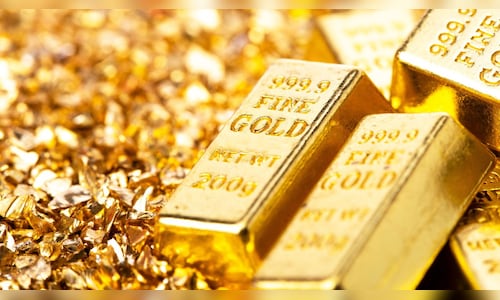He warns that many overlook the risks tied to gold, especially when prices surge.
Naik, Head of Investment Products at Share.Market (PhonePe Wealth), said his firm analysed 15 years of data from March 2010 to March 2025.
The findings show that while gold delivered an annualised return of 10.73%, equities outperformed with 12.49%.
The past five years highlight this gap even more.
Gold posted a 14.03% compound annual growth rate (CAGR), while equities soared with a 26.23% CAGR, according to the firm’s data.
| Performance, volatility and correlation between gold and equities | |||||
|
Period |
CAGR % | Annualized Volatility % | Correlation | ||
| Equity | Gold | Equity | Gold | Equity | |
| 31/03/10 to 31/03/15 | 11.33 | 8.60 | 17.51 | 17.75 | -0.23 |
| 31/03/15 to 31/03/20 | 1.29 | 9.65 | 17.73 | 13.85 | -0.37 |
| 31/03/20 to 31/03/25 | 26.23 | 14.03 | 15.73 | 13.04 | -0.05 |
| 31/03/10 to 31/03/25 | 12.49 | 10.73 | 17.11 | 14.95 | -0.22 |
(Source: Share.Market)
| Maximum drawdown (maximum loss) over the 15 year period ending March 31, 2025 | ||
| Gold | Equities | |
| Period of max drawdown | 28-08-13 to 31-07-15 | 17-01-20 To 23-03-20 |
| Max drawdown | -29.47% | -38.11% |
(Source: Share.Market)
Naik attributes part of this equity surge to the post-Covid market rebound.
Gold’s volatility also challenges its “safe” image. Over 15 years, its annualised volatility reached 14.95%, just below equities at 17.11%. Gold investors saw a maximum drawdown of 29.47% between August 2013 and July 2015.
In comparison, equities experienced a sharper 38.11% fall during the Covid crash.
Yet gold has a clear advantage: diversification.
Naik highlights its negative 15-year correlation with equities at –0.22. This makes gold a useful hedge to reduce portfolio risk.
Naik’s message is measured. He advises investors to avoid overexposure and suggests holding 10–20% of gold alongside equity and fixed income.
The study used Nippon India ETF Gold BeES to track gold and Nifty 500 TRI for equities.





